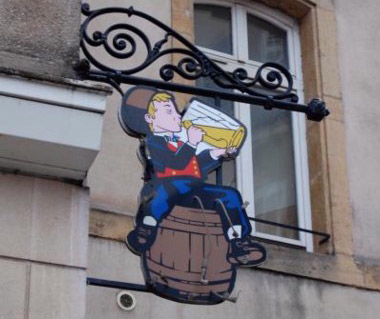It had been more than a decade since I’d been back, but when I traveled to Europe last fall with my family, something had changed. While the trip was still amazing in most important ways, in one critical aspect, the thrill was gone.
Thankfully, for the most part, the cuisine was not an issue. We found great comfort in my favorite old Dutch cheeses. We happily nibbled at sublime Belgian chocolates. We delighted in shopping at a French covered market—filled to the gills with fresh produce, heaven-sent pastries, and an astonishing array of savory products from the surrounding countryside.
All that was great, as was the coffee in most places we went. But no matter how hard I tried (and admittedly I didn’t try very hard), I found little excitement in my search for great, interesting beer.
I’m not suggesting that there isn’t great beer to be found in Europe. I’ve interviewed the Shelton Brothers, area beer importers of international renown, and I’ve heard about them sipping smoked Nordic brew out on the tundra and hobnobbing with Trappist monks. Several guys at the Dirty Truth have told me about their travels to small Belgian hamlets and drinking, in a farmer’s shed, the fairest brew they’d ever had. I’ve had my great overseas beer adventures, too.
But as I was traveling with my family and not on a quest for specialty beer, anything too exotic remained hidden from easy view.
The shelves of beer I reviewed in supermarkets and other beverage shops held a few national or regional brands, with maybe a German or British beer thrown in for flavor. The bars I ordered from usually had no more than three varieties to choose from, and often only one. There were some Bock-style beers (darker lagers brewed to celebrate the harvest) available, but generally, it was a variation on a simple, annoying theme: sweet and light lagers.
In a supermarket in France, I found two higher-alcohol beers that at first seemed interesting. Were these Imperial brews with intense hops flavors, or stouts with an espresso base? As I read the advertising on the cans, it became apparent that the added alcohol was the only discernible “improvement.” Not surprisingly, they tasted like over-boozed beer.
This was not as it should be.
For years, my trips to Europe had been, in part, a kind of pilgrimage to what I considered the world’s beer Mecca. Without even trying, I could find amazing brews I’d never heard of. This time around, though, I found myself unimpressed and yearning for beer from the homeland.
*
Long ago, in the early years of college, I became a budding beer drinker. I was weaned off Coca-cola with Guinness.
Not long after that initial introduction to stout, I spent a year abroad in the late ‘80s, going to school and drinking in England. There my impression that all U.S. beer was shit was firmly implanted, and it’s taken nearly 20 years for me to shake this prejudice.
Even as the microbrew revolution flickered alive in America during the ‘90s—first in Boston with the Sam Adams Brewery and then in brewpubs along the West Coast—nothing that came within my reach compared favorably with my faithful drink from Dublin, or anything from England’s Samuel Smith brewery, a German Bock, or a Belgian Trappist ale.
The first time I first took serious notice of anything brewed this side of the Atlantic was when Ray McNeill started to brew his own beers up in Brattleboro. The McNeill Brewery’s Big Nose Blond bowled me over. I still can’t stop flogging his Dead Horse India Pale Ale. Whenever I was in town, I used to pick up a few bottles to bring back to my home in another state. Still, these were sideline diversions. My enduring mainstays were from across the ocean and far away.
Eventually, I moved to the Pioneer Valley. With the wealth of quality brewing available here and forever growing, my eventual conversion to locally produced beer was inevitable.
McNeill’s and a dozen other local brewers are available minutes away. The selection in most beer shops is diverse and well cultivated. The chalkboard beer menus hanging above many bars are forever getting rubbed out and updated.
Over years of drinking locally brewed beer, I discovered what the Europeans had always known: the best-tasting beer is the stuff that’s the freshest and travels the least distance to your glass.
When I returned to Europe with my family last year, a decade drinking in the Valley had jaded me. I despaired on seeing that each region we visited overseas seemed to have two or three brands of essentially the same beer, served everywhere. For local color, I had to look elsewhere than the beer I drank.
Of course, I didn’t have to look far. Even if I was underwhelmed by most of what I was served, the locations where I responsibly consumed my pints could not be beat. Sipping a Heineken on a canal in Amsterdam or imbibing whatever was being offered at the café at the edge of the St. Louis medieval marketplace in Metz, France, I was contented, even enchanted.
If only they served McNeill’s Dead Horse IPA.•



